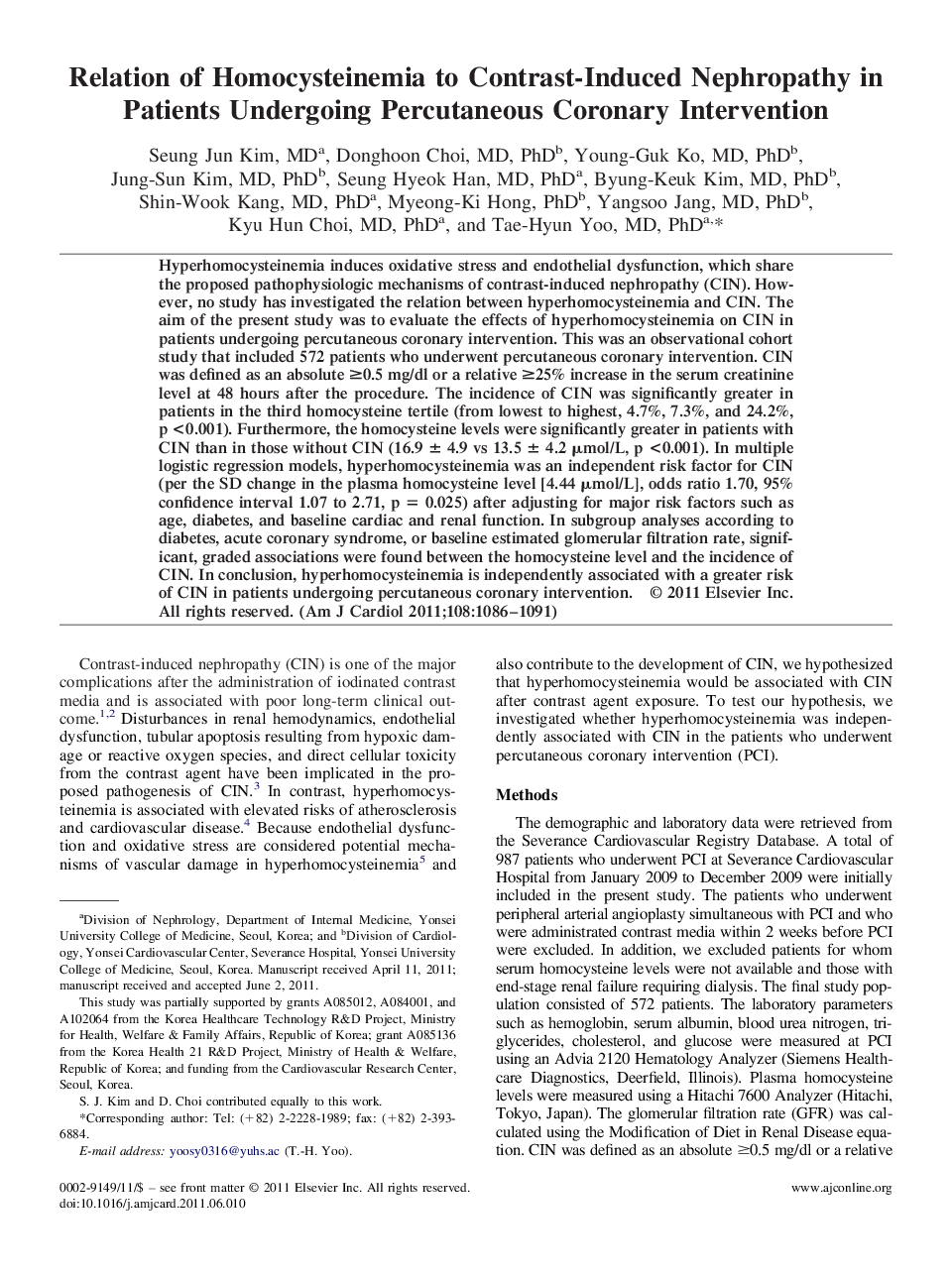| Article ID | Journal | Published Year | Pages | File Type |
|---|---|---|---|---|
| 2856737 | The American Journal of Cardiology | 2011 | 6 Pages |
Hyperhomocysteinemia induces oxidative stress and endothelial dysfunction, which share the proposed pathophysiologic mechanisms of contrast-induced nephropathy (CIN). However, no study has investigated the relation between hyperhomocysteinemia and CIN. The aim of the present study was to evaluate the effects of hyperhomocysteinemia on CIN in patients undergoing percutaneous coronary intervention. This was an observational cohort study that included 572 patients who underwent percutaneous coronary intervention. CIN was defined as an absolute ≥0.5 mg/dl or a relative ≥25% increase in the serum creatinine level at 48 hours after the procedure. The incidence of CIN was significantly greater in patients in the third homocysteine tertile (from lowest to highest, 4.7%, 7.3%, and 24.2%, p <0.001). Furthermore, the homocysteine levels were significantly greater in patients with CIN than in those without CIN (16.9 ± 4.9 vs 13.5 ± 4.2 μmol/L, p <0.001). In multiple logistic regression models, hyperhomocysteinemia was an independent risk factor for CIN (per the SD change in the plasma homocysteine level [4.44 μmol/L], odds ratio 1.70, 95% confidence interval 1.07 to 2.71, p = 0.025) after adjusting for major risk factors such as age, diabetes, and baseline cardiac and renal function. In subgroup analyses according to diabetes, acute coronary syndrome, or baseline estimated glomerular filtration rate, significant, graded associations were found between the homocysteine level and the incidence of CIN. In conclusion, hyperhomocysteinemia is independently associated with a greater risk of CIN in patients undergoing percutaneous coronary intervention.
